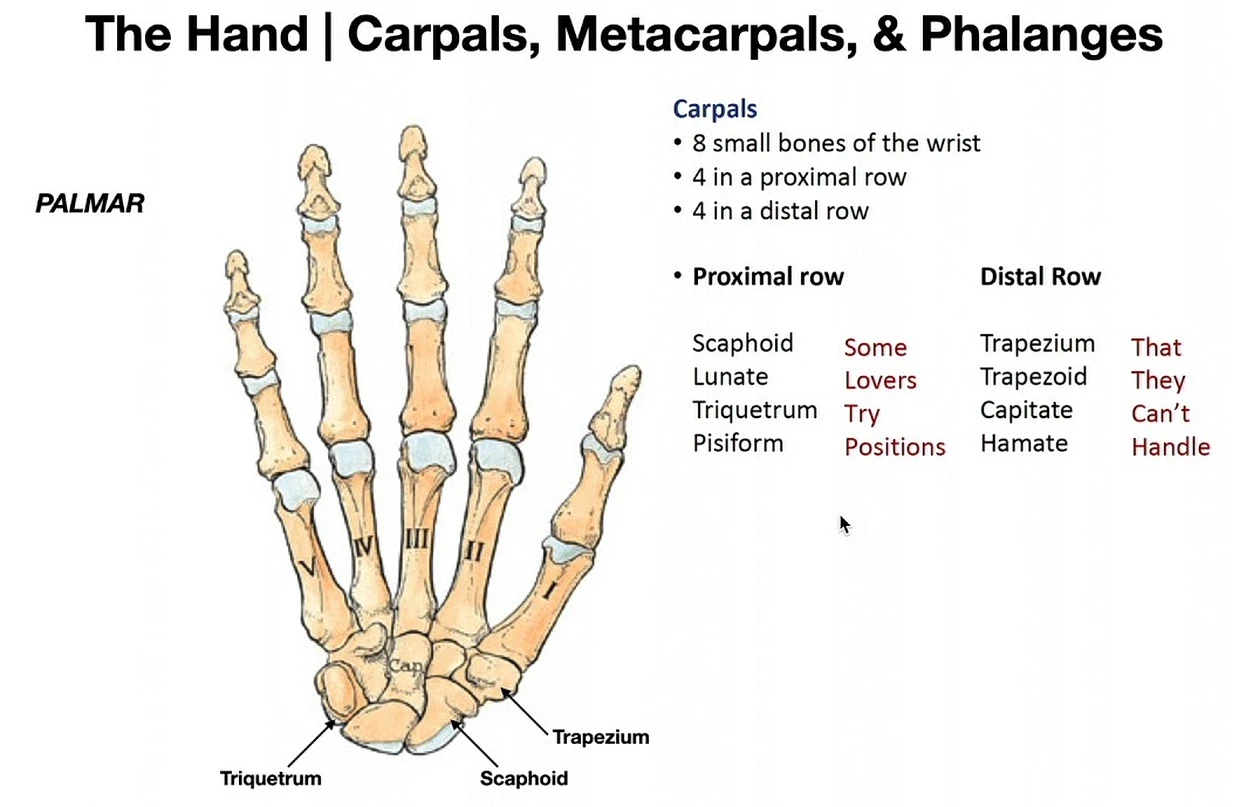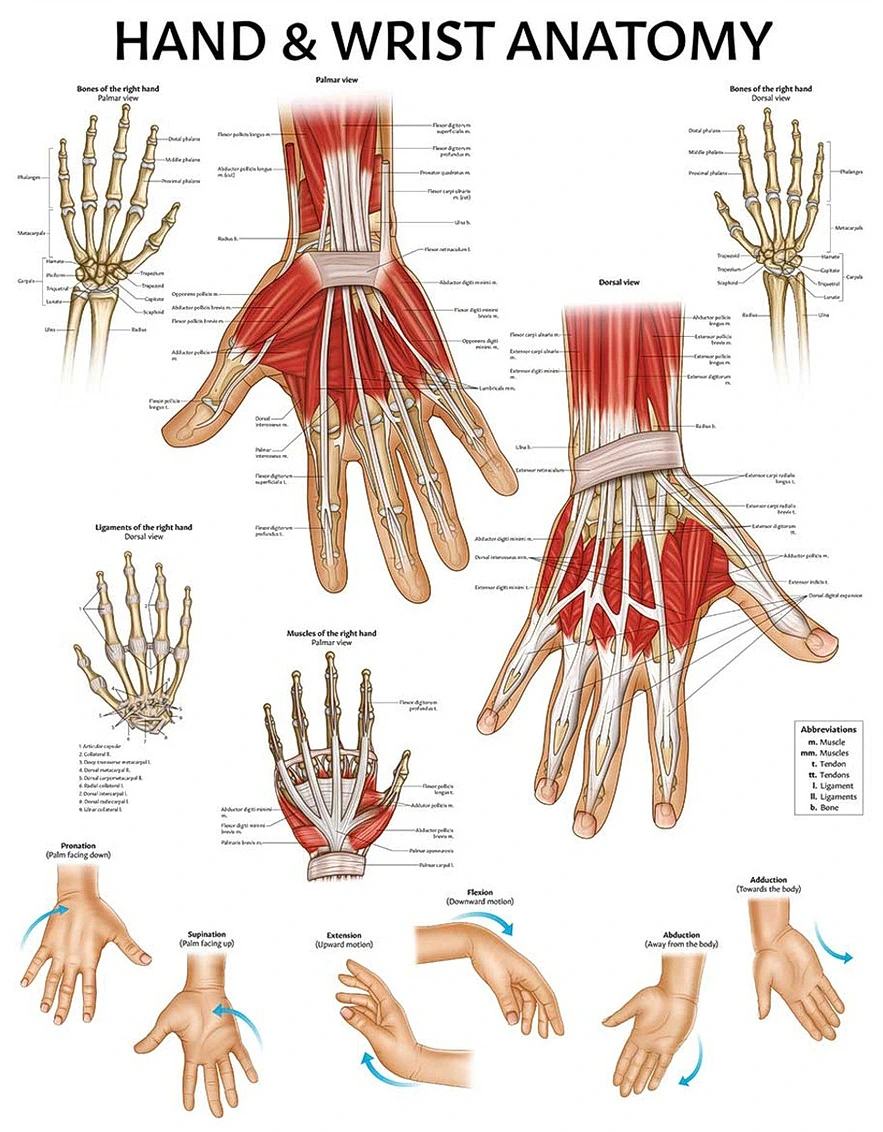
The hand corresponds to the terminal phase of the higher limb, by the continuation of the wrist and ending with the fingers. In complete, we’ve got 27 bones within the hand. All of them work together.
The bones of the hand, along with the muscle tissue and joints, allow the dealing with of objects.
The primary attribute of hand movements is the pinching action, due to the opposable thumb. This situation allows for more delicate work to be carried out with larger precision. This makes writing, software making, drawing, and different actions possible.
Hand Anatomy
The hands are constructions discovered on the finish of the higher limbs, and are shaped by completely different constructions, reminiscent of bones, muscle groups, nerves, tendons, ligaments and blood vessels. The fingers are extraordinarily essential for human beings, being associated to duties that require power and likewise precision, reminiscent of holding, squeezing and manipulating objects.
How Many Bones in Human Hand? (Summary)
- The hands have 27 bones and greater than 20 joints.
- There are eight bones discovered within the wrist.
- There are 5 bones within the palm of the hand.
- In every finger, the presence of three bones may be noticed, excluding the thumb, which has only two bones.
Hand Bones Division
In relation to bone structure, the hand is divided into three distinct areas: carpus, metacarpus and phalanx.
- Carpus
- Metacarpals
- Phalanges

The bones of the wrist are the carpals (eight bones), the metacarpals are the bones of the palm of the hand (5 bones) and the bones of the fingers are the phalanges (three bones in every finger, except for the thumb). It may be seen, due to this fact, that, regardless of being a comparatively small construction, the hand has a substantial variety of bones.
Carpus
The carpal area is made up ofeight bonesorganized in two rows.
The carpal bones are:
- Trapezoid
- Trapezoid
- Scaphoid
- Semilunar
- Pyramidal
- Pisiform
- hamate
- Capitate
See Additionally:Skeletal System
Metacarpus
The metacarpus represents the skeleton of the palm of the hand. It’s shaped by5equal, elongated bones that articulate with the carpal bones and the phalanges.
The metacarpal bones are numbered I by V ranging from the thumb.
See Additionally:Human Skeleton
Phalanx
The phalanges correspond to the thumb, index, centre, ring and ear fingers. In complete, we have14 phalanges.
The phalanges articulate with the metacarpal bones.
Every finger has three phalanges. The thumb has only two phalanges.
The phalanges are categorized into:
- Proximal phalanges: positioned on the base of the finger.
- Middle phalanges: between the proximal and distal phalanges. Doesn’t exist within the thumb.
- Distal phalanges: positioned on the suggestions of the fingers.
Important information about hand anatomy | |
| Carpus: scaphoid, lunate, triquetrum, pisiform, trapezium, trapezoid, capitate, hamate | |
| Metacarpus: base, shaft, head | |
| Phalanges: proximal, center, distal phalanges | |
| Thenar group: abductor pollicis brevis, adductor pollicis, flexor pollicis brevis, opponents pollicis | |
| Hypothenar group:abductor digiti minimi, flexor digiti minimi, oppositor digiti minimi. The palmaris brevis muscle lies on the medial side of the palm of the hand, however is just not thought of a hypothenar muscle. | |
| Metacarpal group:lumbricals, palmar interossei, dorsal interossei | |
| The median nerve and its branches (widespread and correct palmar digital nerves) innervate predominantly the thenar muscle groups. | |
| The radial nervegives cutaneous innervation alongside the outer a part of the thumb. | |
| The ulnar nerveand its branches (superficial, deep, and dorsal) innervate the hypothenar and metacarpal teams. | |
Discover out more, learn also:
